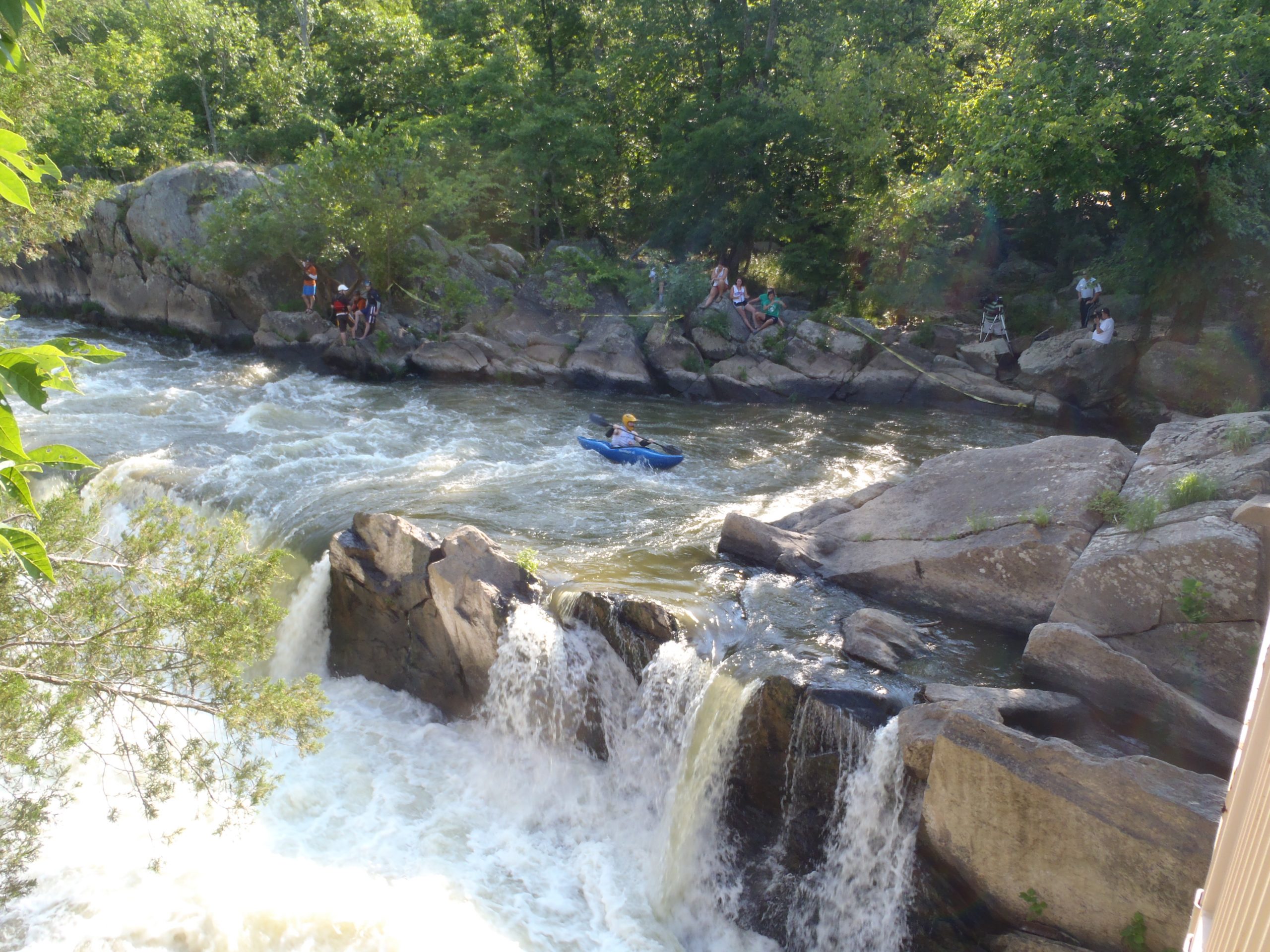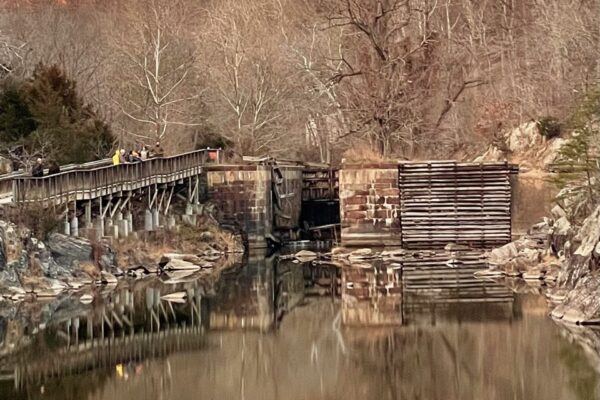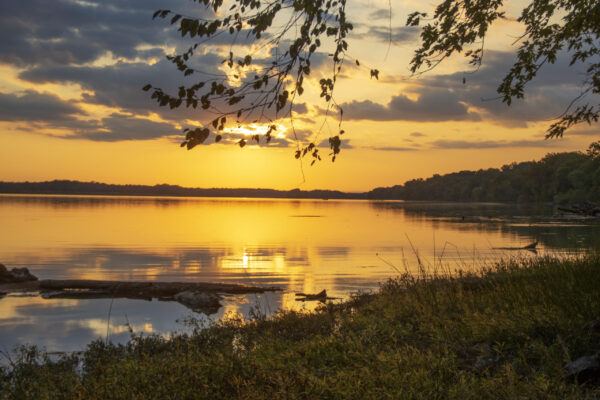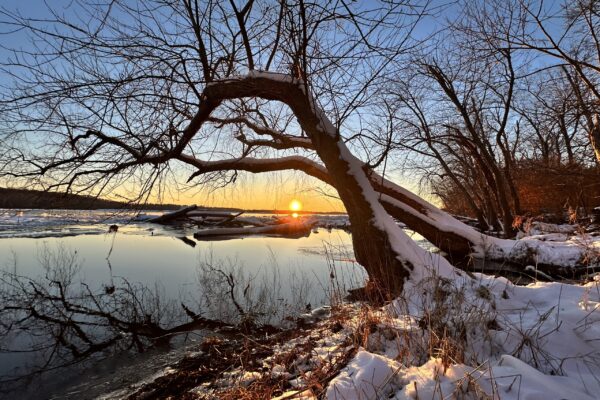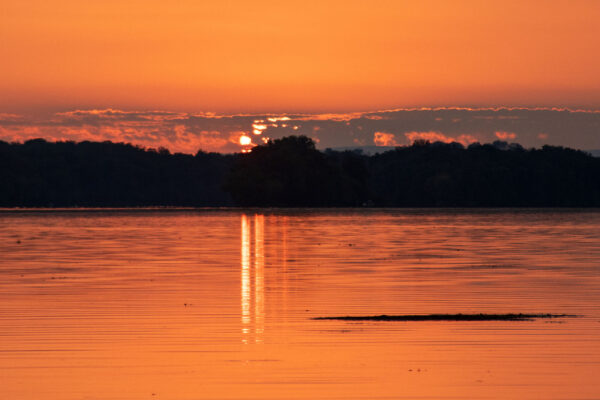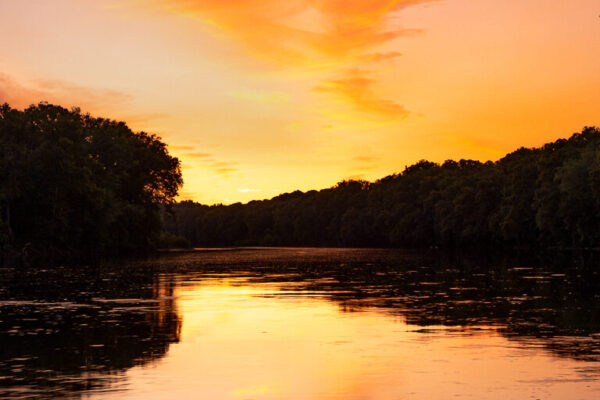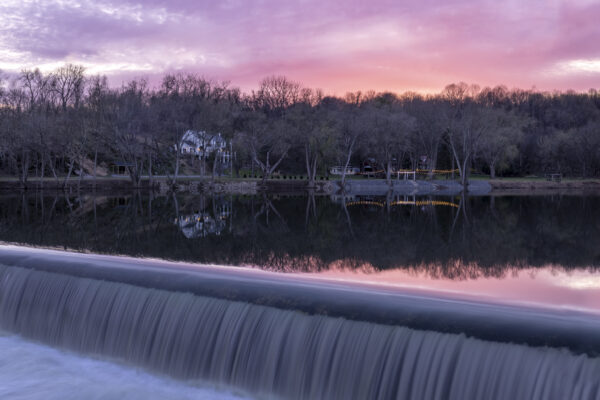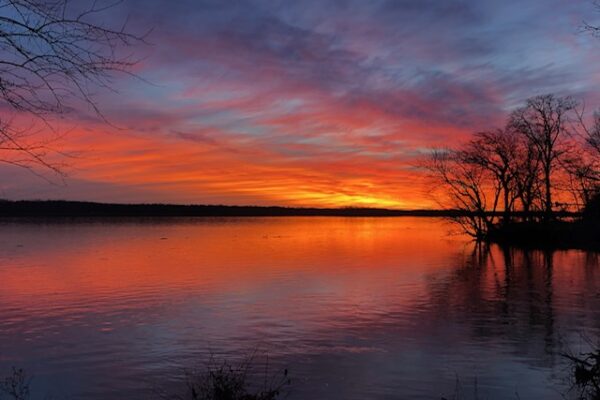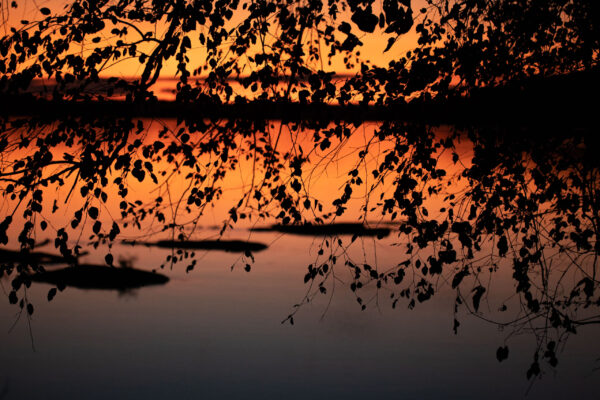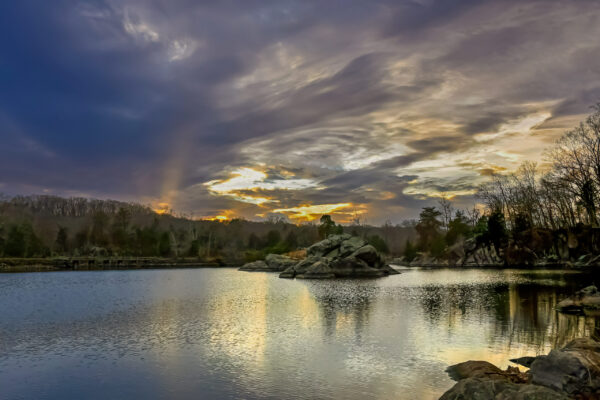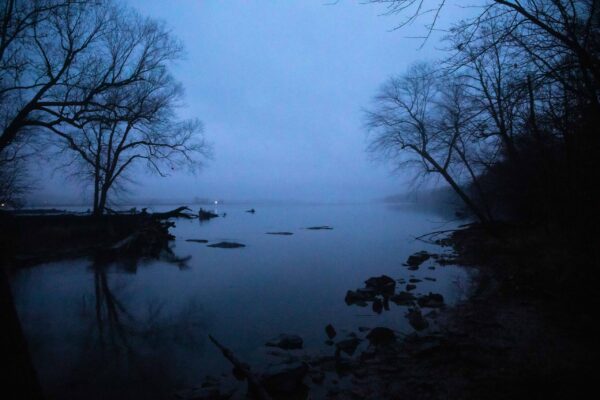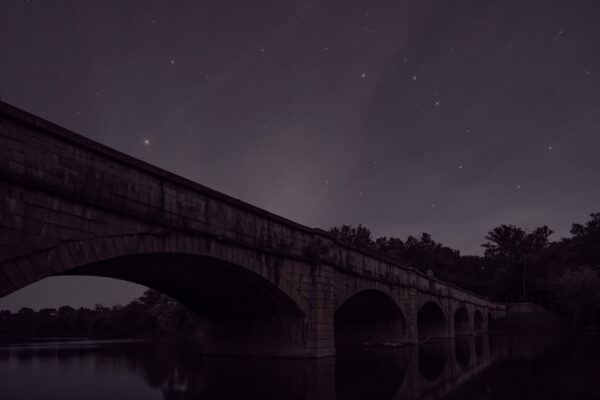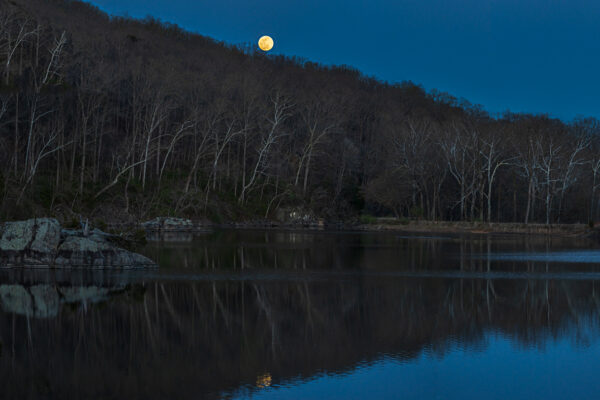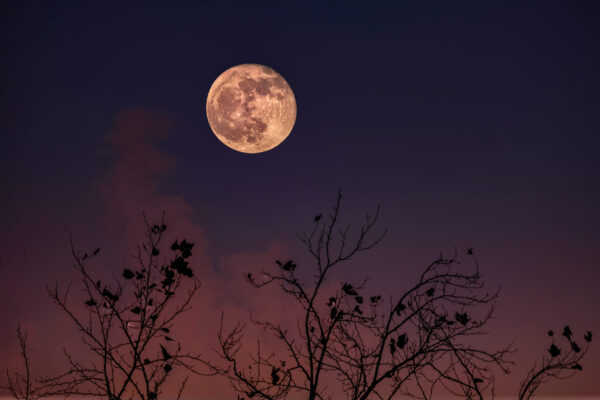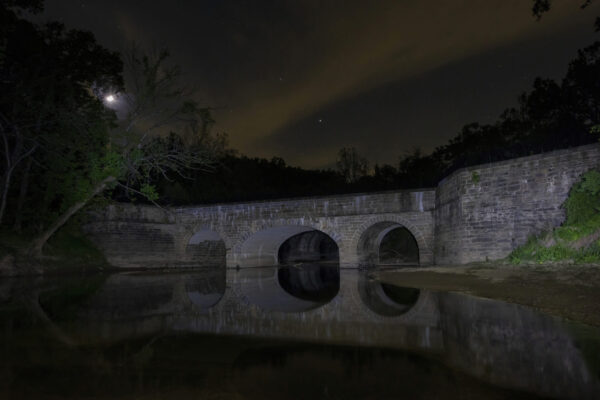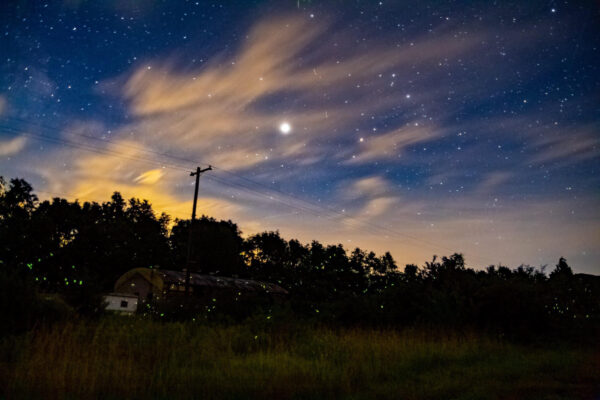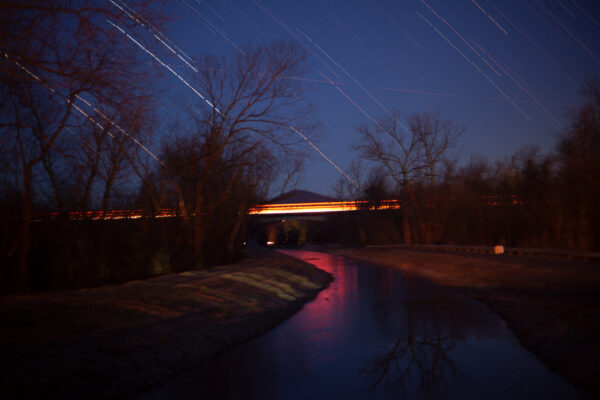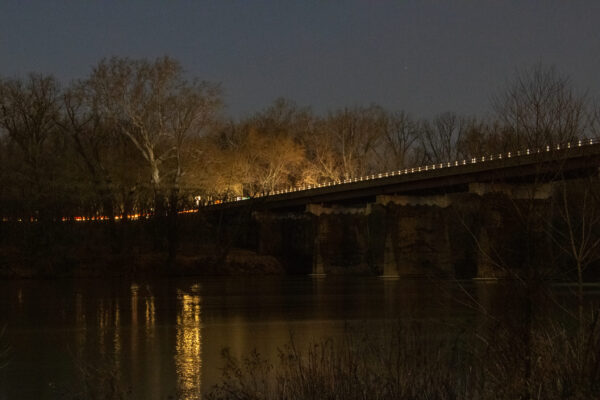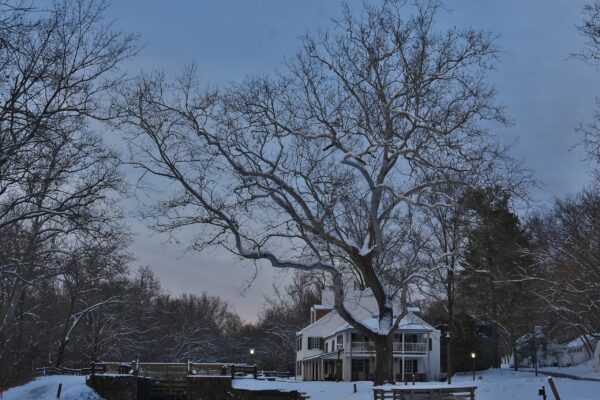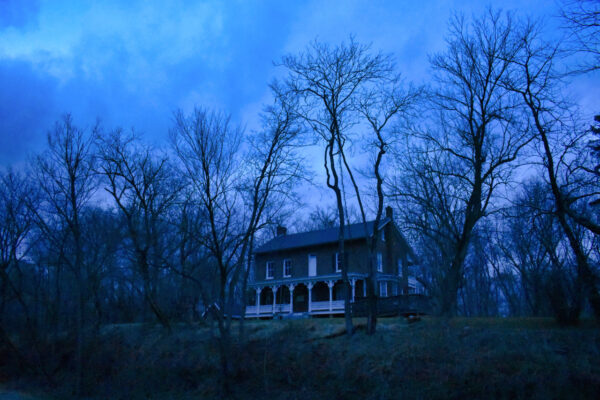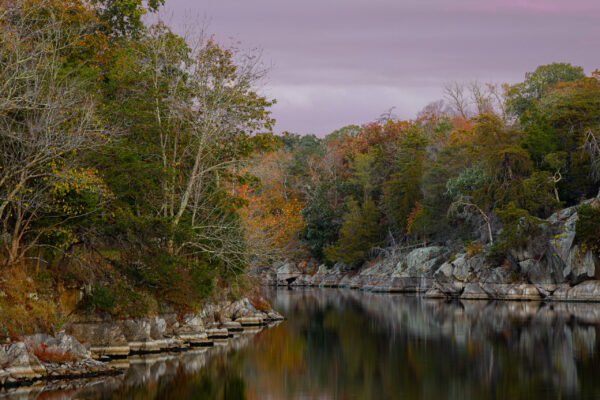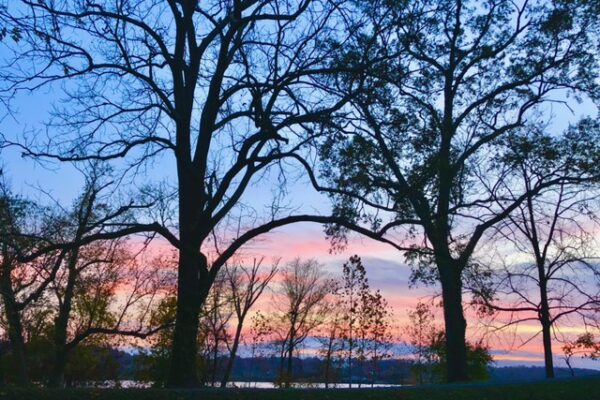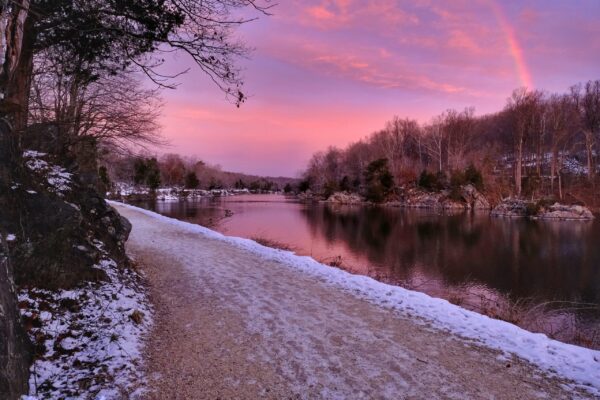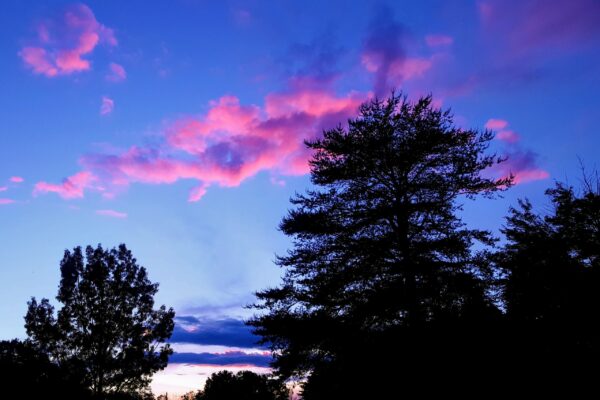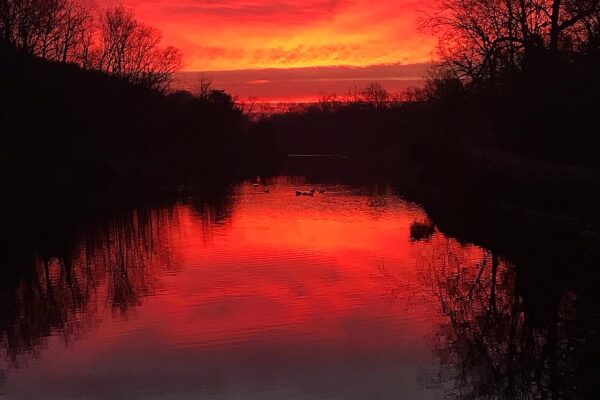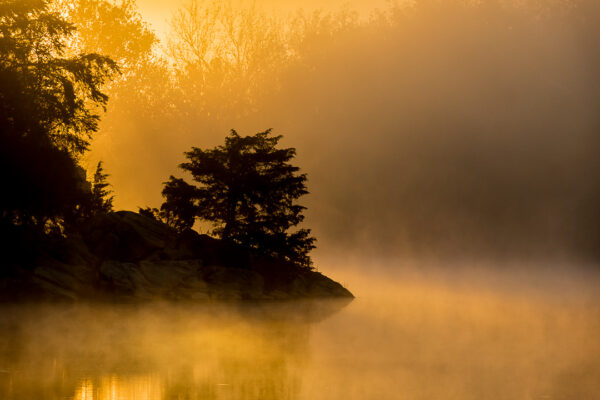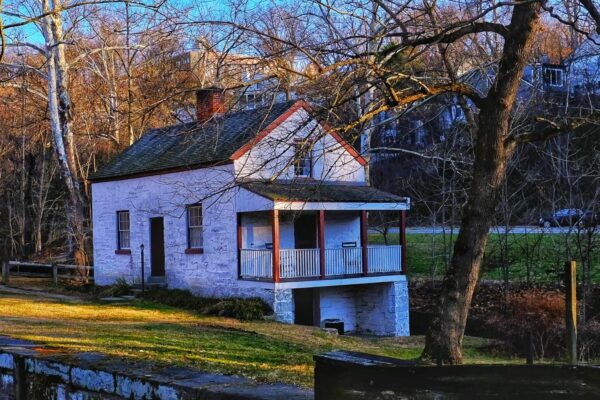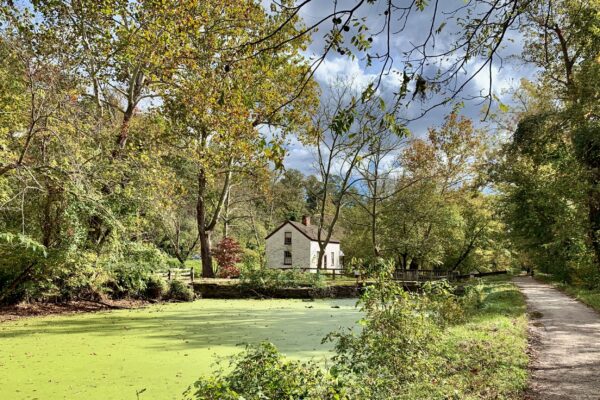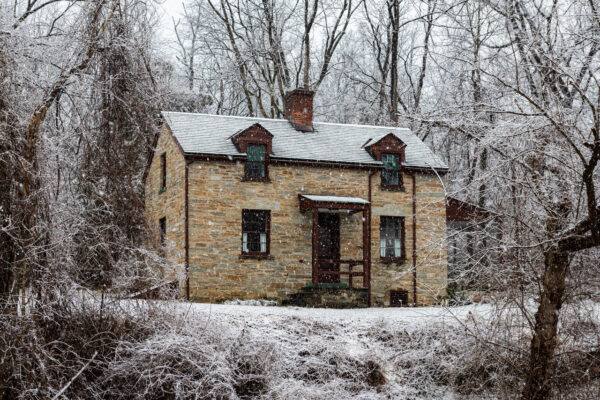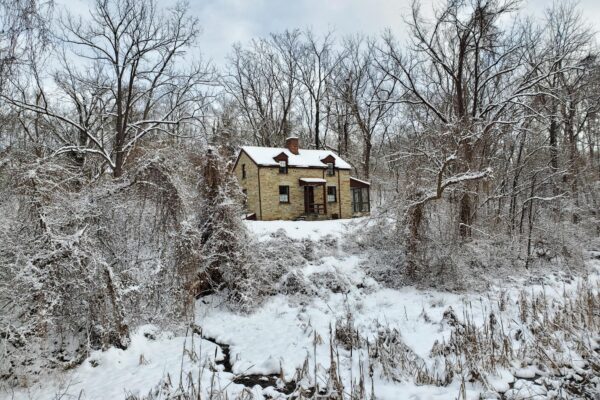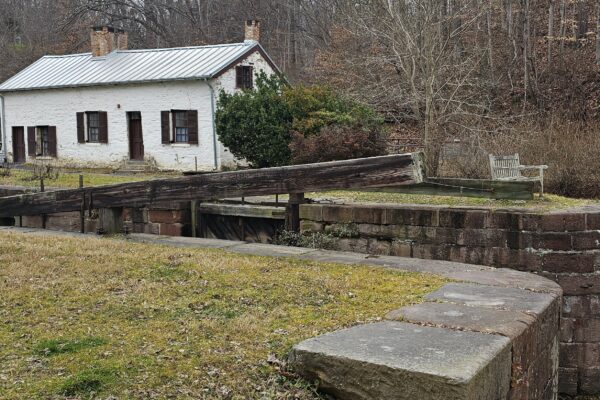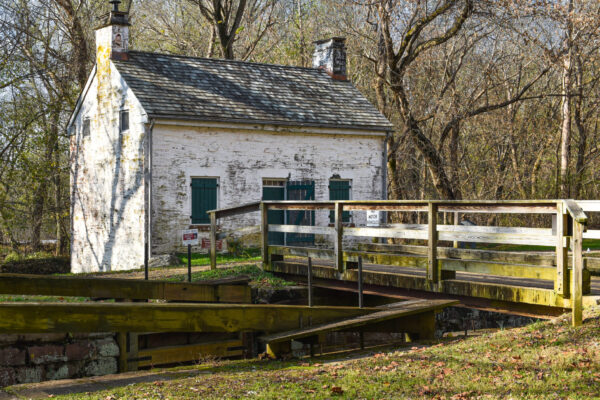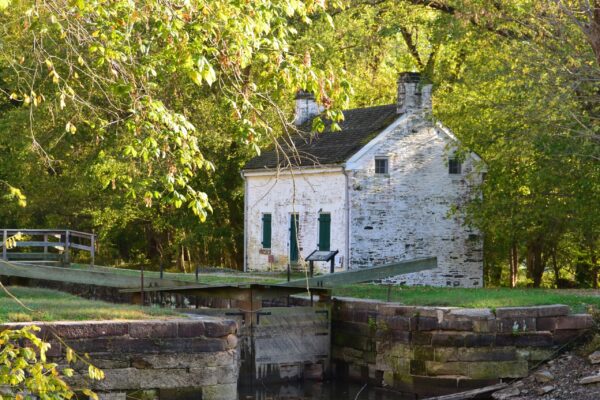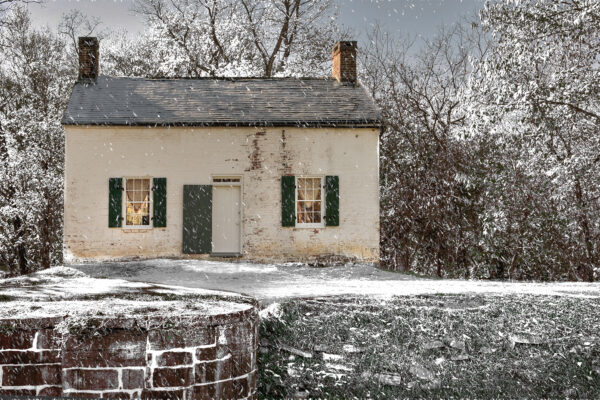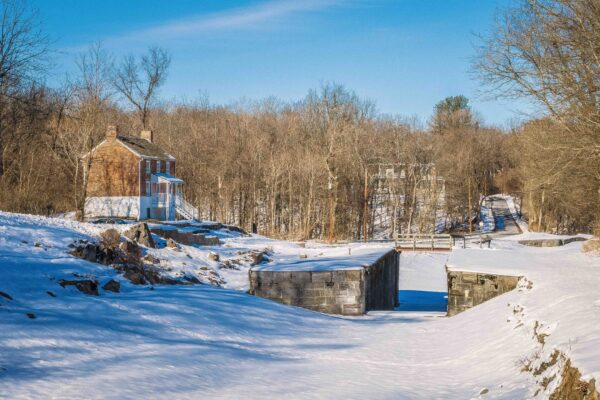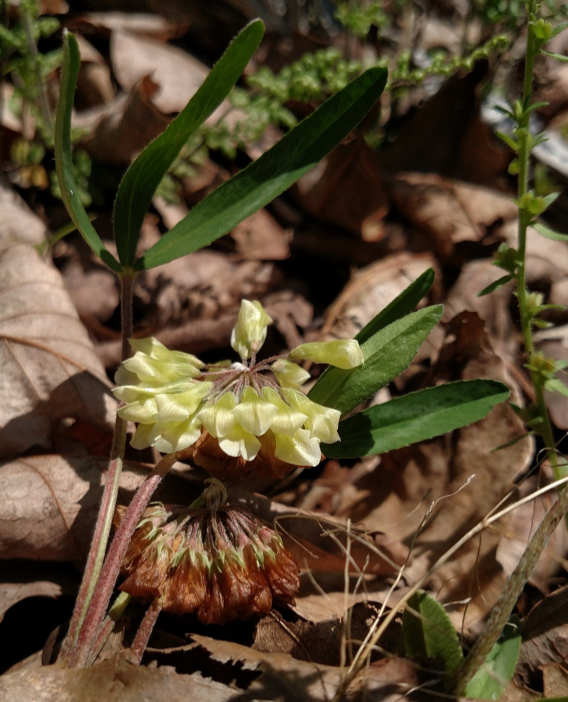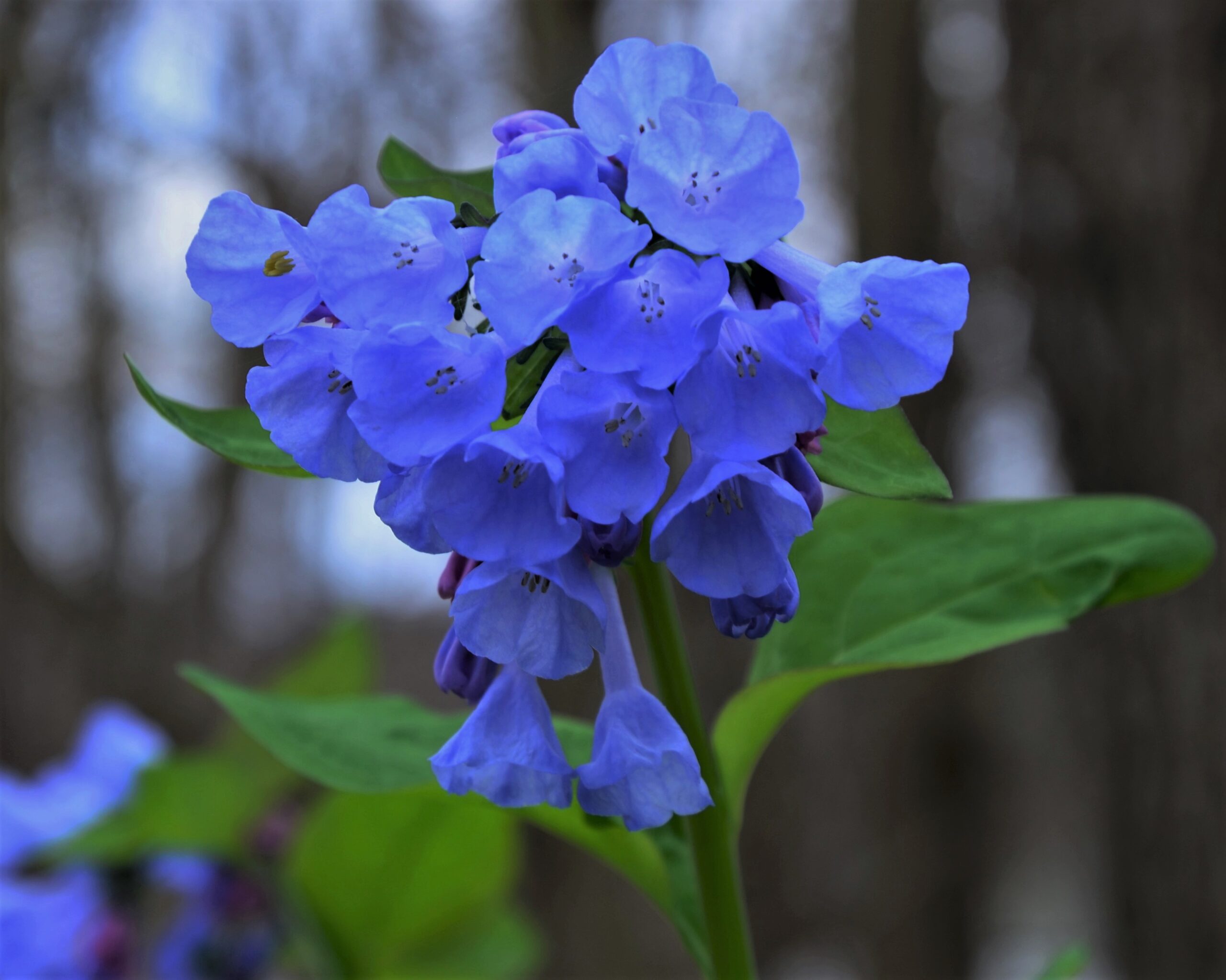The C&O Canal Trust was founded in 2007 as the official nonprofit philanthropic partner of the C&O Canal National Historical Park, working in close partnership with the National Park Service (NPS). The Trust serves as a bridge between the NPS and a vibrant community of individuals and partners who raise funds to preserve the C&O Canal, supporting programs that highlight the park’s historical, natural, and cultural heritage and recreational opportunities. For nearly 20 years, through the generosity of individuals, foundations, corporations, and community partners, the Trust has been instrumental in supporting conservation projects, infrastructure improvements, education programs, and visitor resources throughout the park. We are thrilled to share our ambitious new Strategic Plan that will guide our work for the next four years, culminating with the 200th anniversary of the C&O Canal’s beginning. This plan is built on four pillars that will strengthen our programs and expand our impact.
Read More
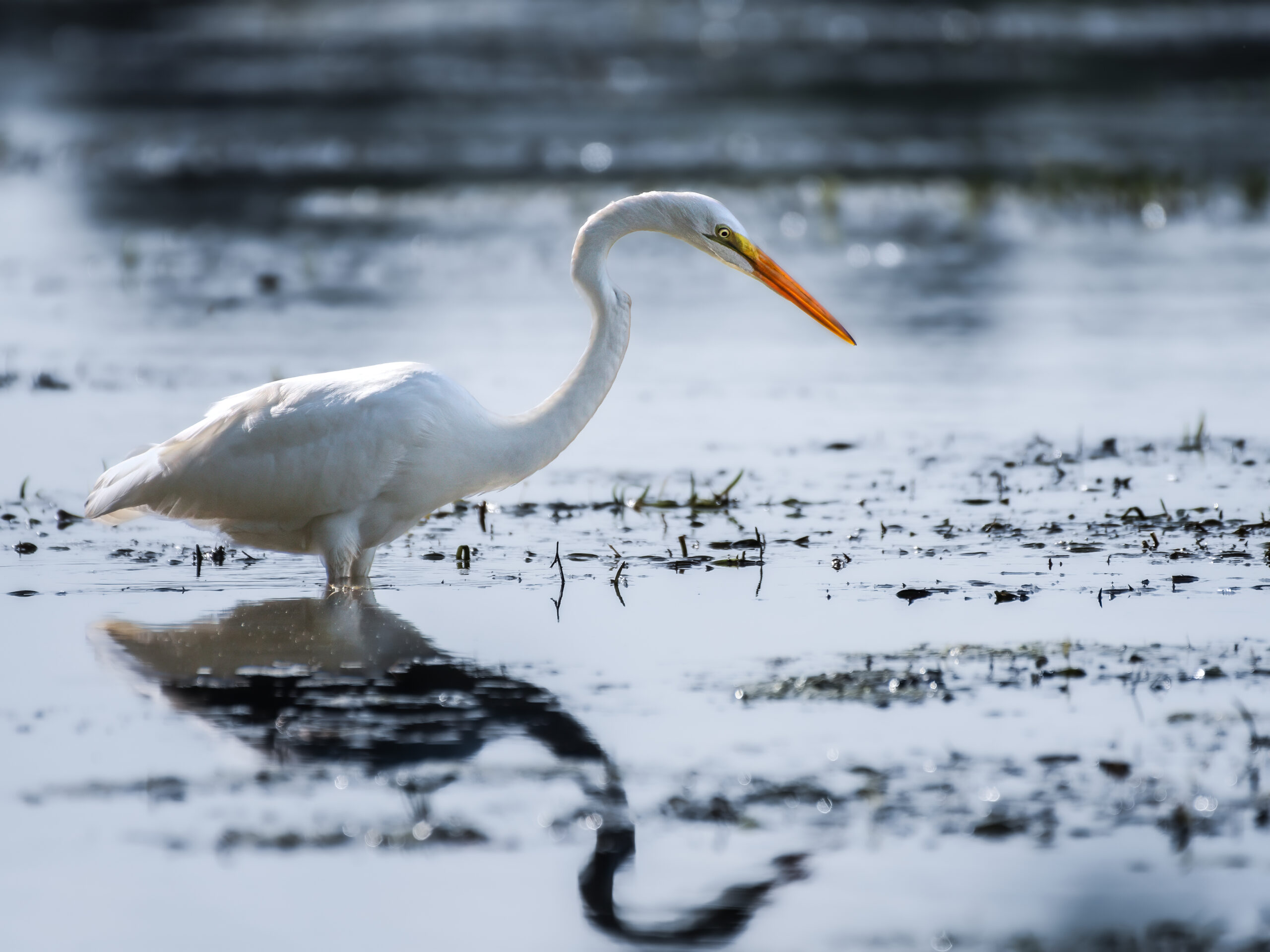
Written by Jimmy Rosebrock
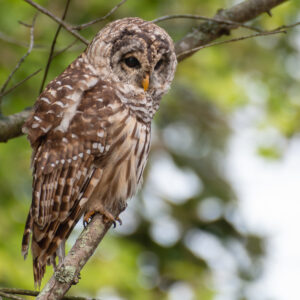
In the winter, it can be difficult to justify going outside. The temperature drops, the vibrant foliage disappears, and colorful songbirds we’re used to seeing in the spring head south for warmer climates. Tens of millions of birds who visit us from May to October to breed and rear their young leave, another sure sign of spring and summer disappears, in just a few short weeks. For everyone, birders (a term used for avid birdwatchers) included spring has a huge incentive to get outside and see the birds, but in winter the appeal literally flies away. While its very commonly known that birds head south for the winter, did you know species of birds like Kinglets, Sparrows, Raptors, and a huge variety of waterfowl land along the C&O Canal? Why do these birds arrive here? For the same reasons the other songbirds head south, to seek warmer weather from their arctic and sub-arctic breeding grounds.
Over 184 miles of canal, preserved and accessible, are a perfect place to go out and spot these winter visitors. Most of the C&O Canal offers numerous environments to see the best variety of birds, all in one place. Flitting through the mixed forests that surround the towpath you can find every single species of woodpecker in our range, including the smallest species in America, the Downy, and the largest the Pileated, and everything in between. The Yellow-Bellied Sapsucker, who is also a member of the woodpecker family is an exclusive winter visitor and can be found scaling trees, drilling a pattern of small borings to release sap, trapping insects for it to come back and eat later. Another exclusive benefit of the wintertime and spotting birds is, it’s much easier. As I mentioned, a sure sign of winter if the loss of the foliage, the benefit of that? The birds can’t hide in the tree canopies making them much easier to see.
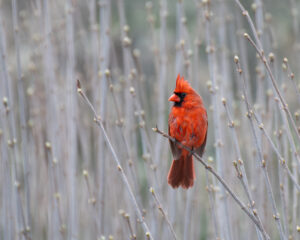
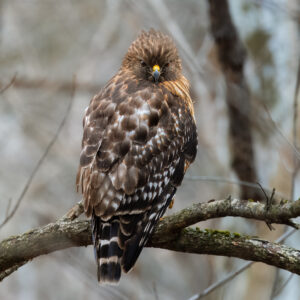
Some of my most memorable encounters occurred when the leaves and temperatures fall. One chilly January morning, whilst exploring the Monocacy Aqueduct I saw a raptor, flying low at the edge of the tree line. Armed with my camera, I began creeping towards the edge of the trees to see if I could get a closer look at the predator. Much to my surprise, as I found an area accessible enough for me to peer into the woods, a Red-Shoulder Hawk was perched on a lone snag in a clearing, staring right back at me. Had it been any other time of year, chances are good I would not have been able to clearly see the hawk. While this encounter was especially extraordinary, I have had many more similar experiences.
For the last few years, a very special pair of birds call the cliffs along the canal home. Nested in an old Raven nest on the cliffs above the Point of Rocks Tunnel, Peregrine Falcons begin preparing to lay eggs, at the end of winter. These birds draw crowds from near and far. Just a short walk from the Point of Rocks boat ramp parking lot, the falcons can be seen in the nest and flying around hunting for food. If you haven’t had the opportunity to see the Peregrines, it is certainly worth the trip. If you’re lucky, you’ll see Kinglets bouncing around in the underbrush, ducks on the river, and hear white throated sparrows singing their unique songs.
While winter can make exploring outside not so fun, the birds offer an incentive to get out there. With dozens of new species calling the C&O Canal their winter home, and many different environments to maximize the variety of species, it’s much easier to justify a walk down the towpath, or visiting a new area of the park, previously unexplored. Birds provide the spark to get out there and enjoy the C&O, so good luck, and enjoy the new opportunities winter birding on the C&O Canal has to offer.
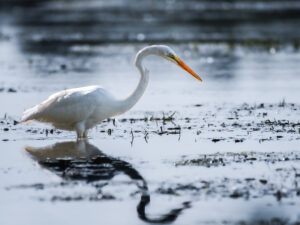
Photos by Jimmy Rosebrock
Cozy Nights on the C&O Canal are made for… strolls through the park, sipping hot chocolate or cider, spending time with friends and family, and being cozy. We can help you with two of those things. By utilizing our award-winning Canal Quarters program or one of the many campsites along the C&O Canal you can create your very own cozy overnight experience. Using our Canal Quarters program, you can stay in one of our seven lockhouses. Stay cozy in one of our modern full amenities options, or for a more authentic experience, you can stay in one of our rustic lockhouses. Steeped in history and surrounded by nature, a night in a lockhouse is an excellent gift for yourself or those closest to you. For a more casual stay check out the many camping options along the canal. Read below for more information!
Check out some photos spanning from sunset to sunrise taken within the Park.
Feeling inspired? Submit your own pictures from the C&O Canal NHP to our monthly photo contest.
Stay Overnight
Book Your Stay in a Canal Quarters Lockhouse
Camp Along the C&O Canal
For C&O Canal NHP camping information click here
Best Places to Camp Along the Towpath
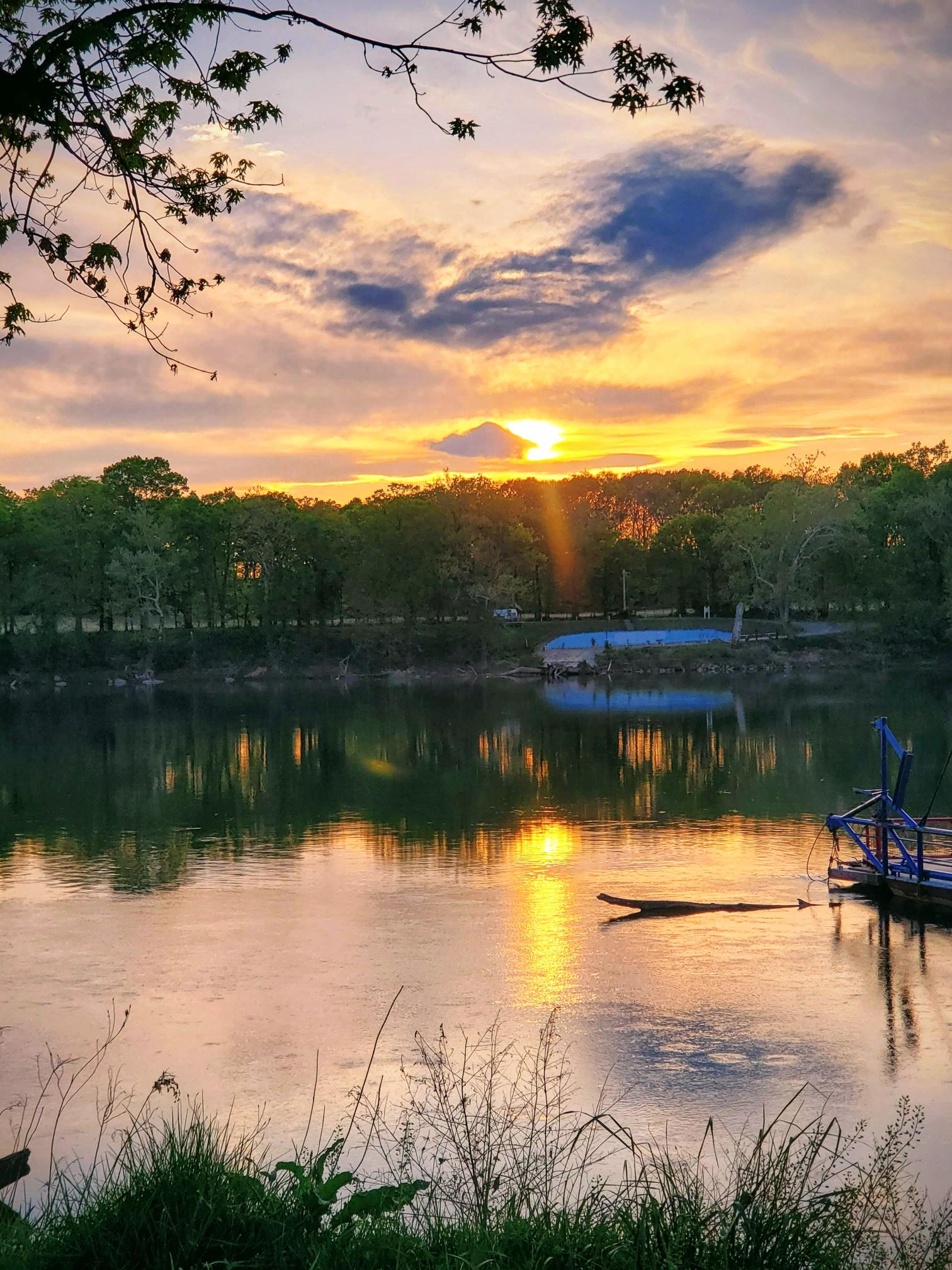
Read More
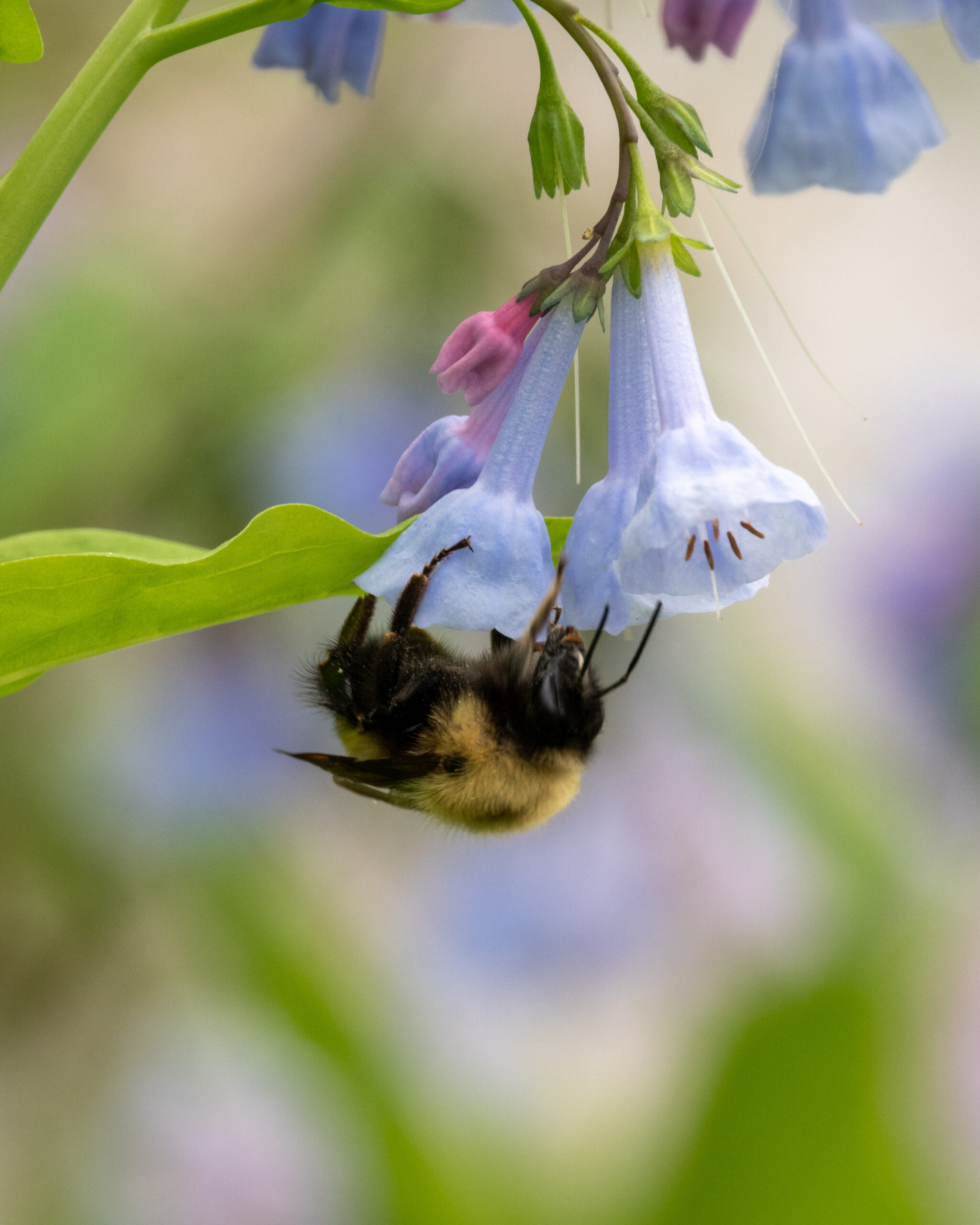
Did you know that the C&O Canal National Historical Park (NHP) is one of the most biologically diverse parks, with one of the highest concentrations of rare, threatened and endangered plant species in the eastern United States? Help us preserve and protect the larger natural ecosystem of the C&O Canal. Get involved this April by giving a gift to the C&O Canal Trust or joining us this year for our public volunteer Canal Community Days events.
Read More
Read More

To celebrate Bats and their impact to our local ecosystems we have compiled some Bat-tastic fun facts to share with you!
1. Bats can eat more than 1,000 mosquitos per night.
Each adult bat can eat up to 1,000 insects per hour. That is over $53 million of free pest control they provide and with the agricultural benefit of being pesticide free.
2. The C&O Canal NHP is home to 10 species of bats.
There are 10 confirmed species of bats within the C&O Canal NHP. Eight of which are hibernating bats.
3. Bats are pollinators just like birds and bees.
Bats aid in pollination both by transferring pollen when drinking nectar from flowers but also through seed spreading.
4. Bats are the only mammal that can fly.
There are other mammals that have the ability to glide, or fall with style. Though bats are the only mammal that have the true ability to fly.
5. Not all bats use echolocation to find prey.
While many believe bats to have poor eyesight and rely on echolocation, bats’ vision is actually pretty comparable to human sight. As well not all bats can echolocate, only 70% have the capability.
6. The species of bats within the areas of the C&O Canal are all insectivores.
Insectivore as the name suggests eat insects. While other species of bat can be carnivores or frugivores. Carnivorous bats eat meat like frogs, fish and birds. Frugivores eat fruit and other vegetation like fig, mango and agave.
7. The C&O Canal NHP is a top favorite for hibernating bats in the state of Maryland.
Eight different species of bat now call the Indigo Tunnel “home,” including the Maryland state endangered small-footed myotis and the federally endangered Indiana bat. The Indigo Tunnel, located in Allegany County, has been identified by Maryland Department of Natural Resources as one of the largest bat hibernacula in the state. To protect the hibernating bats and their home, the National Park Service has placed metal gates at the portals of the tunnel. (pictured below)
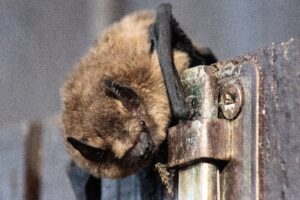
Photo by Maximillian Ruther
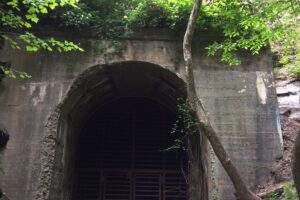
Photo by Nanette Nyce
Information for this post was sourced from the NPS and BatWeek.org
Top image by HitchHike via Pexels
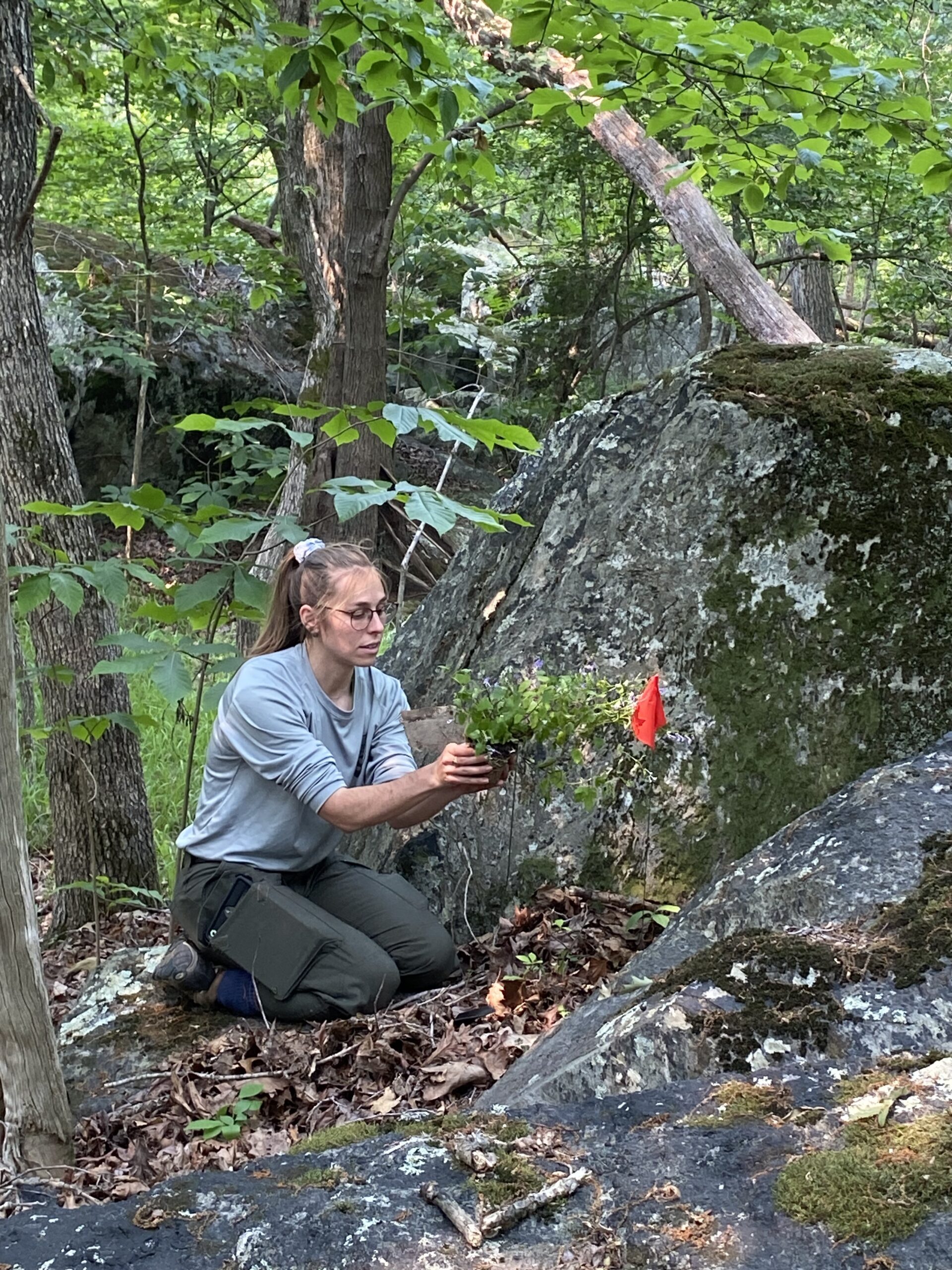
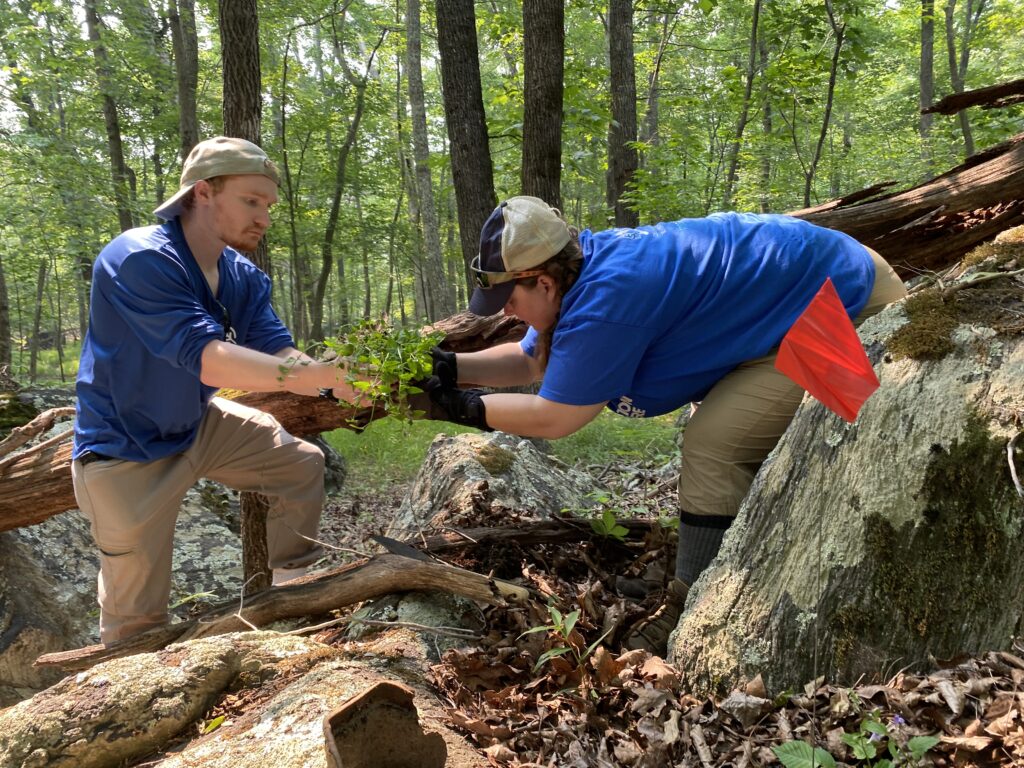
Student Conservation Association interns planting smooth rock skullcap at a site in the Potomac Gorge area. Photo by C&O Canal NHP/NPS.
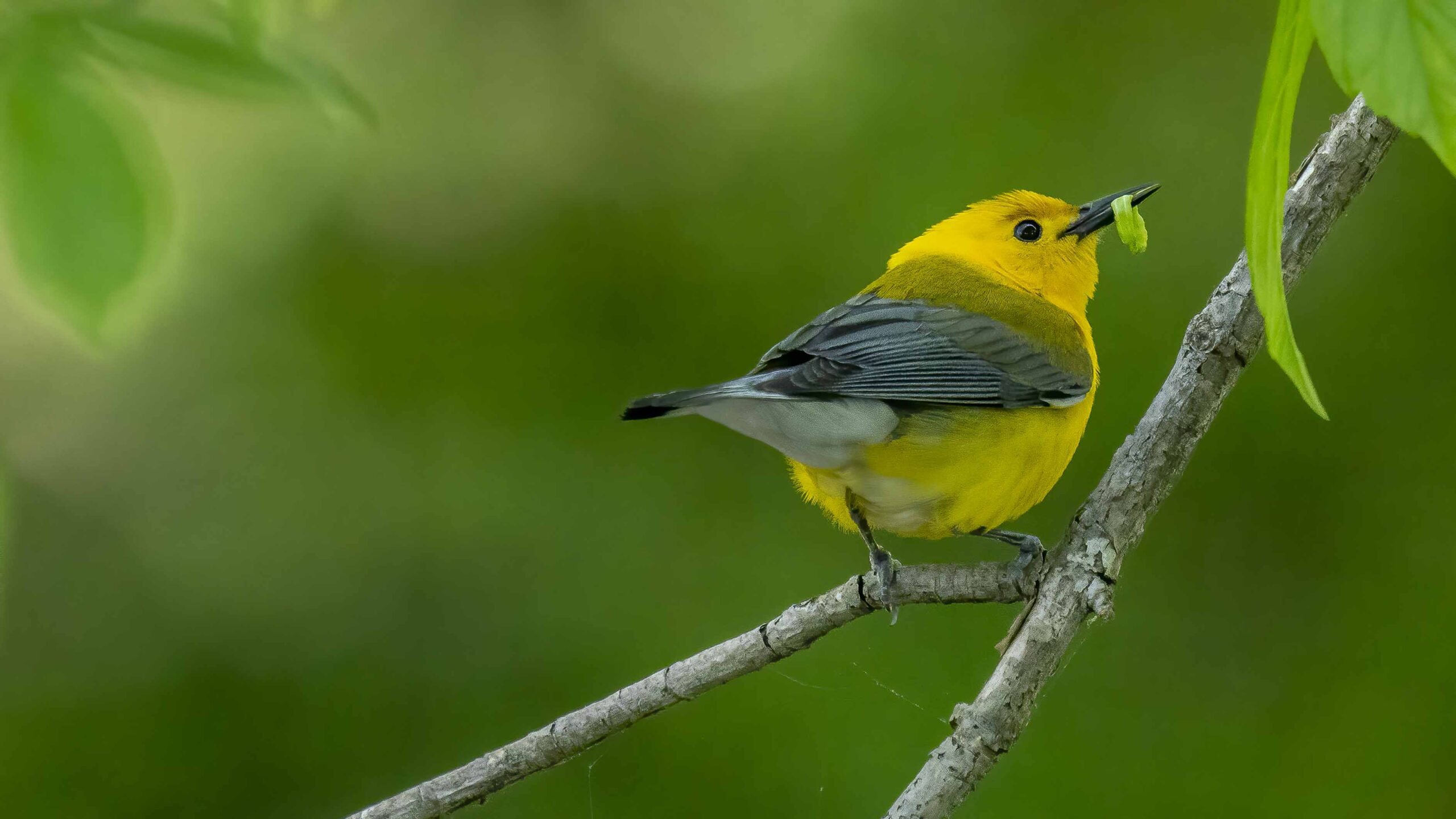
Nature has a profound impact on human well-being. Research shows that spending time in nature and connecting with your natural surroundings is associated with better body and brain health. Now researchers know that birds are a specific source of those health benefits.

Prothonotary Warbler by Robert A. Powell
Here are five ways that birding at the C&O Canal NHP Can Improve Your Health:
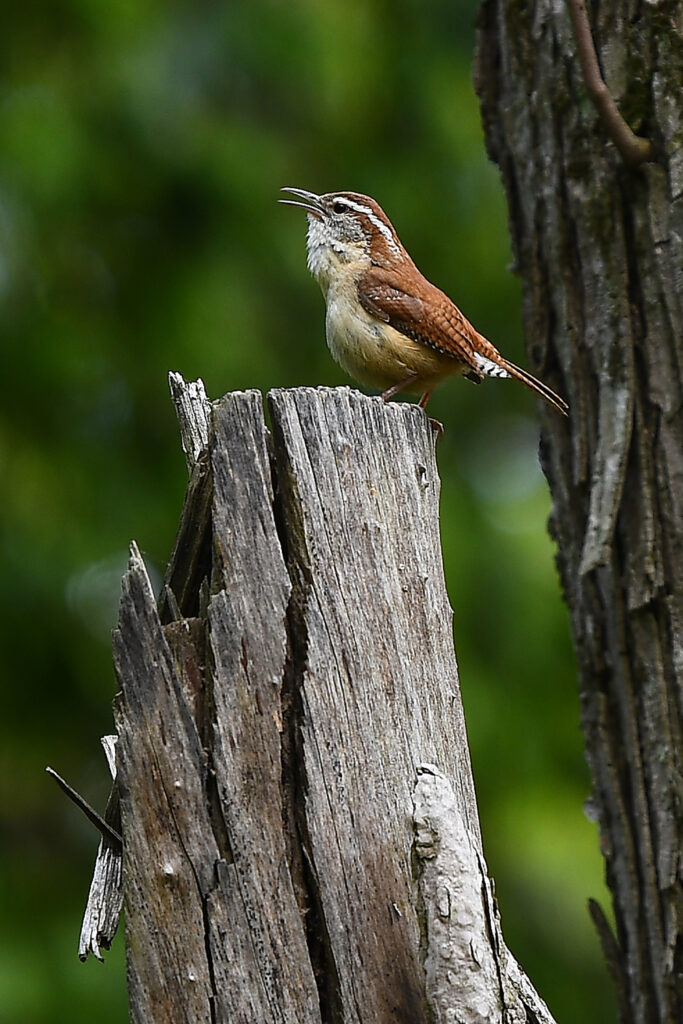
Carolina Wren Singing on its Pedestal by Eric Stuyck
1. Physical Fitness
Birding is not just about observing birds; it often involves exploration. To do that, you have to move from place to place physically. The C&O Canal stretches for 184.5 miles, offering ample hiking, biking, and leisurely walking opportunities. These activities promote cardiovascular health, improve endurance, and boost energy levels. Birders can enjoy the scenic beauty while moving their bodies, improving overall fitness and stamina.
2. Stress Reduction and Mental Well-being
In our increasingly digitized world, finding moments of tranquility is essential for maintaining mental health. Birding at the C&O Canal offers a respite from the daily stresses and a chance to immerse oneself in the wonders of nature. Studies show that listening to birdsong has been found to help your mood, reducing feelings of anxiety, depression, and paranoia in healthy research participants. Nature and birdsong also reduce stress, lowering blood pressure and cortisol levels. Birding provides a mindful experience, allowing you to be fully present in the moment and forget about everyday life.
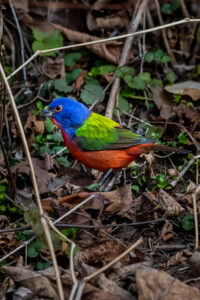
A Welcome Visitor by Vinod Thomas
3. Connection with Nature
Humans have an innate connection with the natural world, and birding provides an opportunity to foster and deepen that connection. The C&O Canal is a thriving ecosystem home to over 120 diverse bird species. By observing and identifying birds in their natural habitats, you’ll develop a greater appreciation for the intricacies of nature and the delicate balance of ecosystems. This connection with the environment can lead to a heightened sense of environmental stewardship and a desire to protect and conserve our natural heritage.
4. Cognitive Enhancement
Birding is both a physical and sensory experience and an intellectually stimulating one. It requires observation, concentration, and the ability to recognize patterns and identify different species. Regularly engaging in this activity can enhance cognitive skills such as attention to detail, memory recall, and pattern recognition. Additionally, birding fosters curiosity and a thirst for knowledge about the natural world, encouraging continuous learning and exploration.
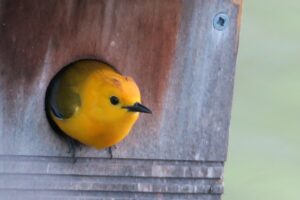
Well, Hello There! by Christine Ley
5. Social Engagement
Birding can be a solitary activity, allowing for introspection and self-reflection. However, it also offers opportunities for social interaction and building connections with like-minded individuals. Joining birding groups or participating in bird walks with other birders at the C&O Canal can create a sense of community, providing a platform to share knowledge, exchange experiences, and forge new friendships. Social connections are vital for mental well-being, and birding offers a supportive network of individuals who share a common passion for nature.
Birding at the C&O Canal offers a delightful blend of nature, exercise, and mental stimulation, making it a perfect activity for individuals seeking physical and psychological well-being. From reducing stress and improving cardiovascular health to fostering a sense of wonder and environmental consciousness, the health benefits of birding at the C&O Canal are undeniable. So grab your binoculars, lace up your walking shoes, and embark on a birding adventure that will nourish your body.

What is TRACK Trails?
 TRACK Trails is an award-winning program by Kids in Parks that offers family-friendly outdoor adventures. By following the self-guided brochures and signs, your visit to the park becomes a fun and educational adventure. As you track your progress, you become eligible for prizes.
TRACK Trails is an award-winning program by Kids in Parks that offers family-friendly outdoor adventures. By following the self-guided brochures and signs, your visit to the park becomes a fun and educational adventure. As you track your progress, you become eligible for prizes.
How does it work?
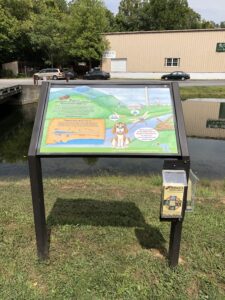
TRACK Trail in Hancock by Trust Staff
Start by going to the Kids in Parks TRACK Trail website and search your area on the map to find an adventure near you. Once you find a location, you can browse the adventures on the map under Find An Adventure. Sometimes TRACK Trail brochures are located at the park or attached to a TRACK Trail sign, but you can always access them on the Kids in Parks website.
TRACK Trail adventures exist at three locations in the C&O Canal National Historical Park—Brunswick, Williamsport, and Hancock. For example, in Williamsport there are four different adventures: Conococheague Aqueduct Scavenger Hunt, Lock 44 Scavenger Hunt, Nature’s Hide & Seek, and Need for Trees. Many of the nature-based adventures are general enough they could be used throughout the Park.
After completing tasks, you can track them on your device to receive TRACKer gear. Different TRACK Trail adventures have different gear awarded, such as stickers and cards for hiking trails, disks for the disk golf courses, or bike bells and first aid kits for the bike trails, and more. The more adventures you complete, the cooler gear you get. You can see a full list of gear rewards here!
How did Kids in Parks and TRACK Trails come about?
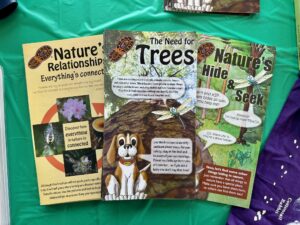
Photo by Trust Staff
Kids in Parks began in 2009 on the Blue Ridge Parkway, developed by the Blue Ridge Parkway Foundation in partnership with the National Park Service and the Blue Cross Blue Shield of North Carolina Foundation. As the program demonstrated easy implementation and effectiveness in getting children outdoors, Kids in Parks rapidly expanded to other parks and public lands across the country. Achievements of the program include endorsements by the American Academy of Pediatrics, awarded as a Let’s Move! Champion of Change by the White House, and acknowledgement for Outstanding Public Engagement by the Public Lands Alliance.
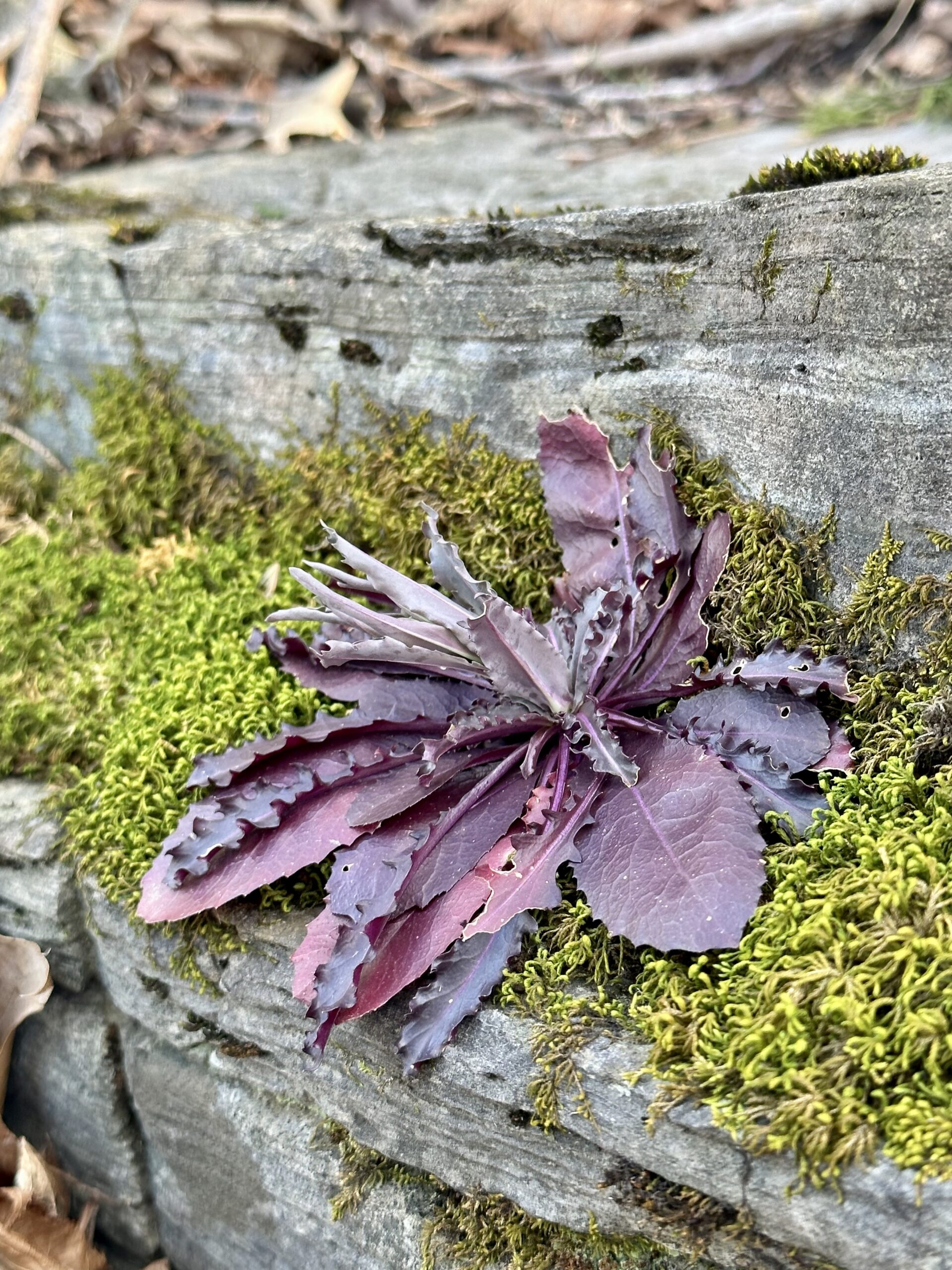
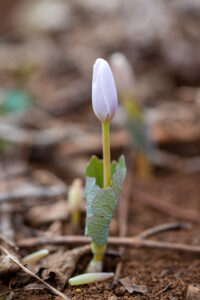
Bloodroot photo by Trust Staff
Native plants are an essential part of the ecosystem in the C&O Canal National Historcal Park (NHP), which is one of the most biologically diverse parks in the National Park system, especially in regard to plant species. The Park has recorded over 1,500 species of vascular plants, including over 260 non-native plant species, and more than 200 rare, threatened, and endangered (RTE) plants. The number of rare plants is one of the highest concentrations of state-listed rare plants in the eastern United States.
The Potomac River creates a mosaic of different natural habitats throughout the C&O Canal NHP. Native plants are the backbone of natural habitats and play a critical role in maintaining the balance of the ecosystem. They have evolved over thousands of years, adapting to the local climate, soil, and other environmental factors.
Here are some reasons why native plants are crucial for our environment:
- Native plants provide habitat and food for wildlife. They are the primary source of food and shelter for a wide range of wildlife species, including birds, insects, mammals, and reptiles. These plants provide essential nutrients and shelter for animals, including food for larvae and insects that pollinate flowers, fruits, and vegetables.
- Native plants support biodiversity. They play a vital role in supporting biodiversity. They provide food and shelter for insects, which, in turn, support other animals and plant species. Native plants also help to prevent soil erosion and maintain the balance of the ecosystem.
- Native plants are adapted to local conditions. They are acclimated to the local climate and soil, which makes them more resilient and better able to withstand drought, floods, and other environmental stresses. This means they require less maintenance and water, making them an excellent choice for homeowners and gardeners.
- Native plants improve soil health. They have deep root systems that help to improve soil health by increasing soil organic matter and reducing erosion. This means that they can help to prevent nutrient runoff and protect water quality.
- Native plants have cultural significance. They have been used for centuries by indigenous communities for medicinal, food, and spiritual purposes. By preserving native plant species, we can help to protect and celebrate cultural heritage.
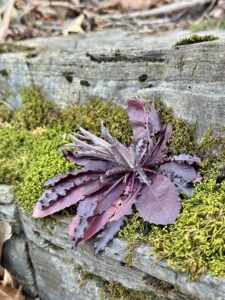
Rockcress Photo by Trust Staff
Native plants are an essential component of our natural environment. They play a vital role in maintaining the balance of the ecosystem in the C&O Canal NHP, at our homes, in our communities, and beyond. By promoting the use of native plants in landscaping and gardening, we can help to protect and preserve our natural environment for future generations.
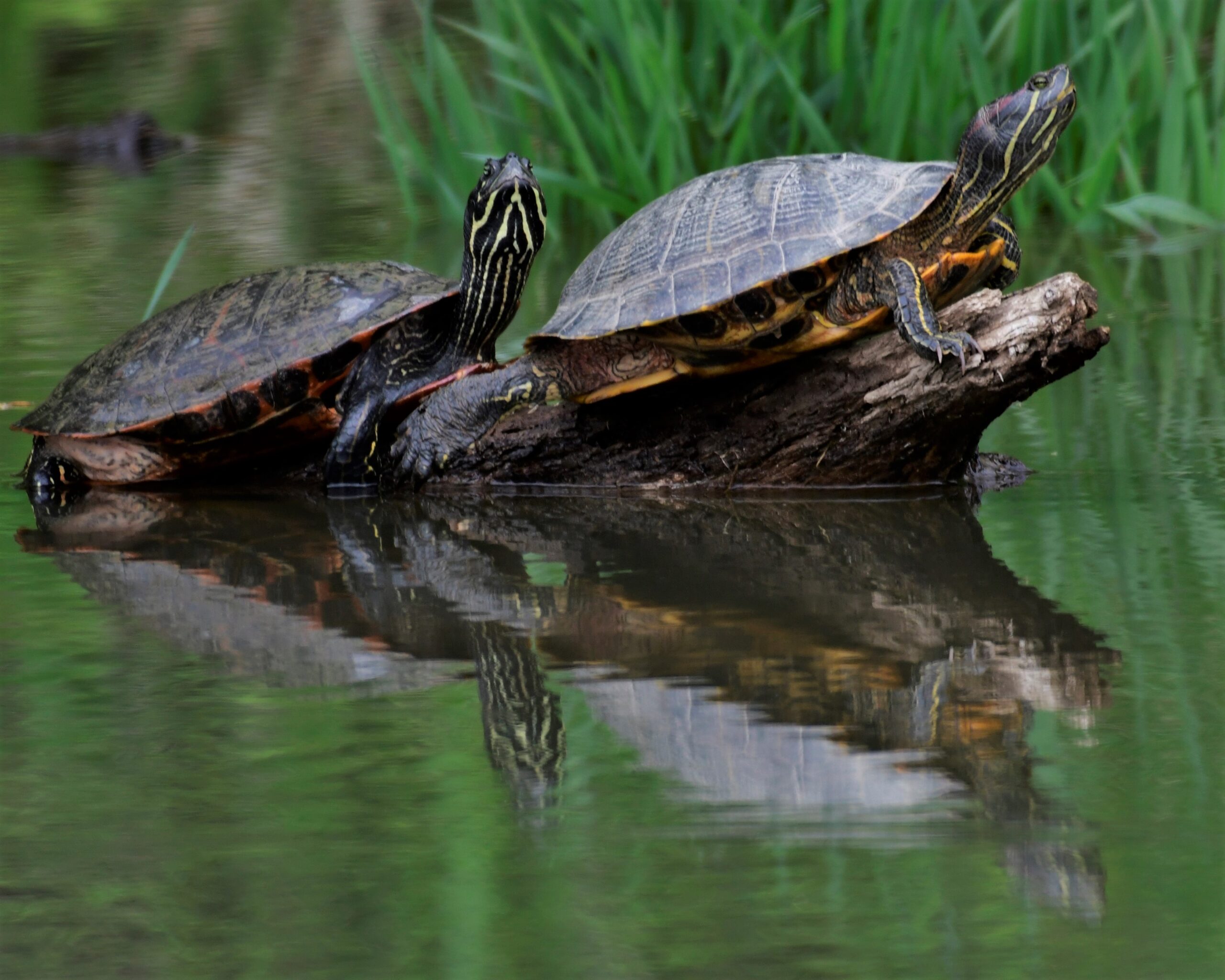
Take a walk on the C&O Canal towpath in the spring or summer and you’re likely to spot turtles sunning themselves on logs in the canal or perhaps along the towpath. Have you ever wondered where those turtles go during the winter months?
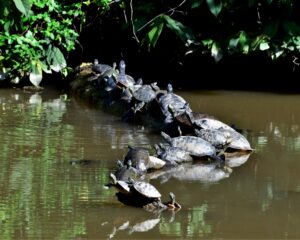
Photo by Jan Branscome
Turtles brumate during the winter, similar to hibernation in mammals. Brumation is a semi-dormant winter cool-down that allows turtles to survive when food is scarce and temperatures are much colder. During brumation, turtles can still move but they live off of stored fat and their metabolism slows.
The canal is home to three different types and several species of turtles: the Eastern Snapping Turtle (Chelydra serpentina serpentina), Basking Turtles, and the Eastern Box Turtle (Terrapene carolina carolina).
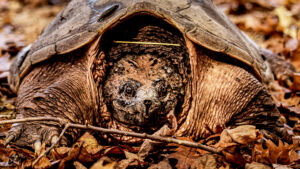
Photo by Paul Graunke
Eastern snapping turtles are a common find throughout the C&O Canal. As their name suggests, these omnivores have long necks, quick reactions, and are aggressive on land. These large reptiles are almost exclusively aquatic: they occupy the canal and the Potomac River except for land travel during the spring and early summer for mating and nesting. Females lay an average of 50 eggs between April and November. Snapping turtles can be identified by their flat oval brown shell, wide flat heads, bulky limbs, and long alligator-like tail. They weigh between 10 and 35 pounds and are the largest freshwater turtle in Maryland. Eastern snapping turtles dive down to the muddy bottom of the canal and the Potomac River in the winter, remaining alert to light and temperature.
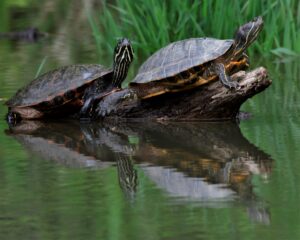
Photo by Jan Branscome
Basking turtles are a frequent sight throughout the canal and in slow-moving or still portions of the river where they can be viewed swimming and sunning themselves on logs or rocks. These turtles rarely ever leave the water except for nesting in the spring and early summer. Eastern Painted Turtles (Chrysemys picta picta) can be identified by their olive-brown to black shells with red markings on the edge, yellow spots on either side of their black head, yellow stripes along the jaw and through the eyes, and yellow or orange belly. These omnivores are just 4.5 to 6 inches long.
Similar species include the non-native Red Eared Slider (Trachemys scripta elegans), and native Northern Red-Bellied Cooter (Pseudemys rubriventris) which are both slightly larger than Painted Turtles. The presence of a red oval-shaped marking behind the eye helps identify Red Eared Sliders from the narrower yellow lines on the Red-Bellied Cooter’s head. Red Eared Sliders are omnivores and are typically 8 to 13 inches long. Red-Bellied Cooter’s are omnivores as juveniles and herbivores as adults, growing 10 to 12.5 inches in length. All basking turtles stay buried in the mud beneath the water during the winter months, occasionally rising to the surface for food or air.
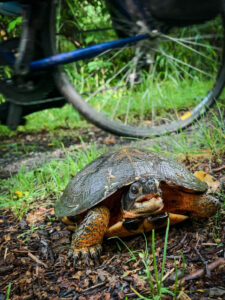
Photo by Garner Woodall
Eastern box turtles are the most terrestrial turtle native to the C&O Canal. They are named for their boxy, high-domed shell and they have the ability to close up their body using a hinge on the shell’s underside. These omnivores can be found throughout the Park, in both forested and open habitats. Like all other turtle species in the C&O Canal, they are most active in the spring and early summer. Box turtles are usually dark brown with gold or orange blotched patterns on the shell, orange scales on the head, neck, and front limbs, and have brown or red eyes, which differ based on the sex of the turtle (typically red for males, yellow-brown for females). They grow to be 4.5 to 6 inches in length, burrowing deep under the soil and leaves to brumate during the winter months.
June is National Pollinators Month, the perfect time to emphasize the important relationship between pollinators and native plants. One of the things that makes the C&O Canal National Historical Park (NHP) so special is the park’s biodiversity. It is home to more than 1,500 different species of plants, including 118 rare, threatened, and endangered plants. One of the C&O Canal Trust’s more recent initiatives includes raising funds to help protect these rare plants.
How does pollination work? Simple! Pollinators, such as birds, bees, butterflies, and even bats, carry pollen debris to plants, which is then deposited on the stigma of these plants. The plants are then fertilized, which in turn allows them to reproduce, producing fruit, seeds, and more plants. This process is essential to maintaining ecosystems around the world. Pollination allows floral growth, which provides habitat for animals, like insects and birds. Pollinators also contribute to healthy soils and clean water by fostering robust plant communities.
Below we have included several photos of some of the more common pollinators you may see in the park. We encourage you to take note of these important creatures that work hard to help maintain the biodiversity of our beloved C&O Canal! Pollinators’ ecological service is valued at $200 billion each year (USDA, 2020).
Monarchs
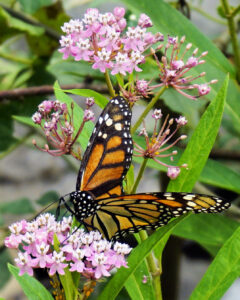
Drawn by Sweet Nectar (Monarch) by MJ Cllingan
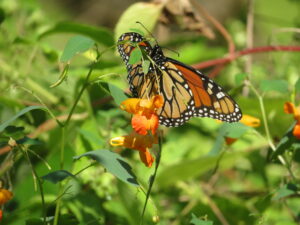
Monarch on Jewelweed 9.19.21 (near Harper’s Ferry) by Sue Roosma
Bees
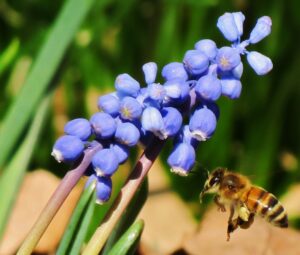
Grape Hyacinth with Honey Bee by Amy Allen
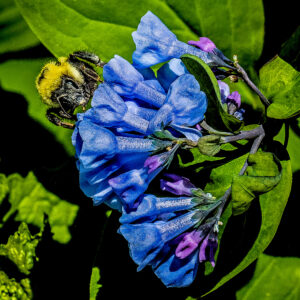
Busy Bee and Bluebells by Paul Graunke
Swallowtail Butterfly
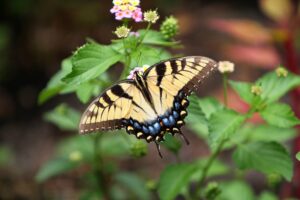
Eastern Tiger Swallowtail by Charissa Hipp
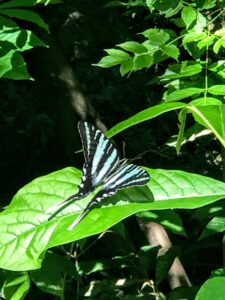
Zebra Swallowtail on Paw Paw leaf by Jon Wolz
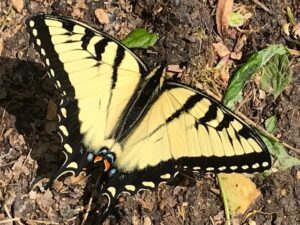
Swallowtail Butterfly near mm 23 by Andrea Hom
Cabbage White Butterfly and Great Spangled Fritillary
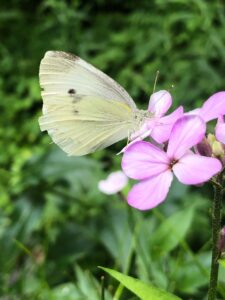
Cabbage White Butterfly on Dames Rocket by Charissa Hipp
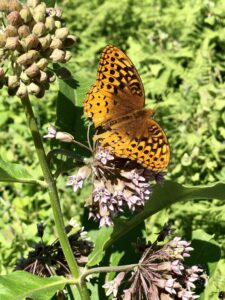
Great Spangled Fritillary on Milkweed by Charissa Hipp
Bats
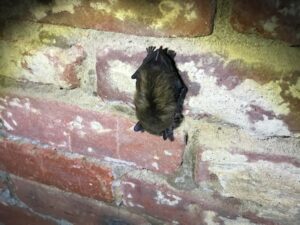
Bat in Paw Paw Tunnel by Nanette Nyce
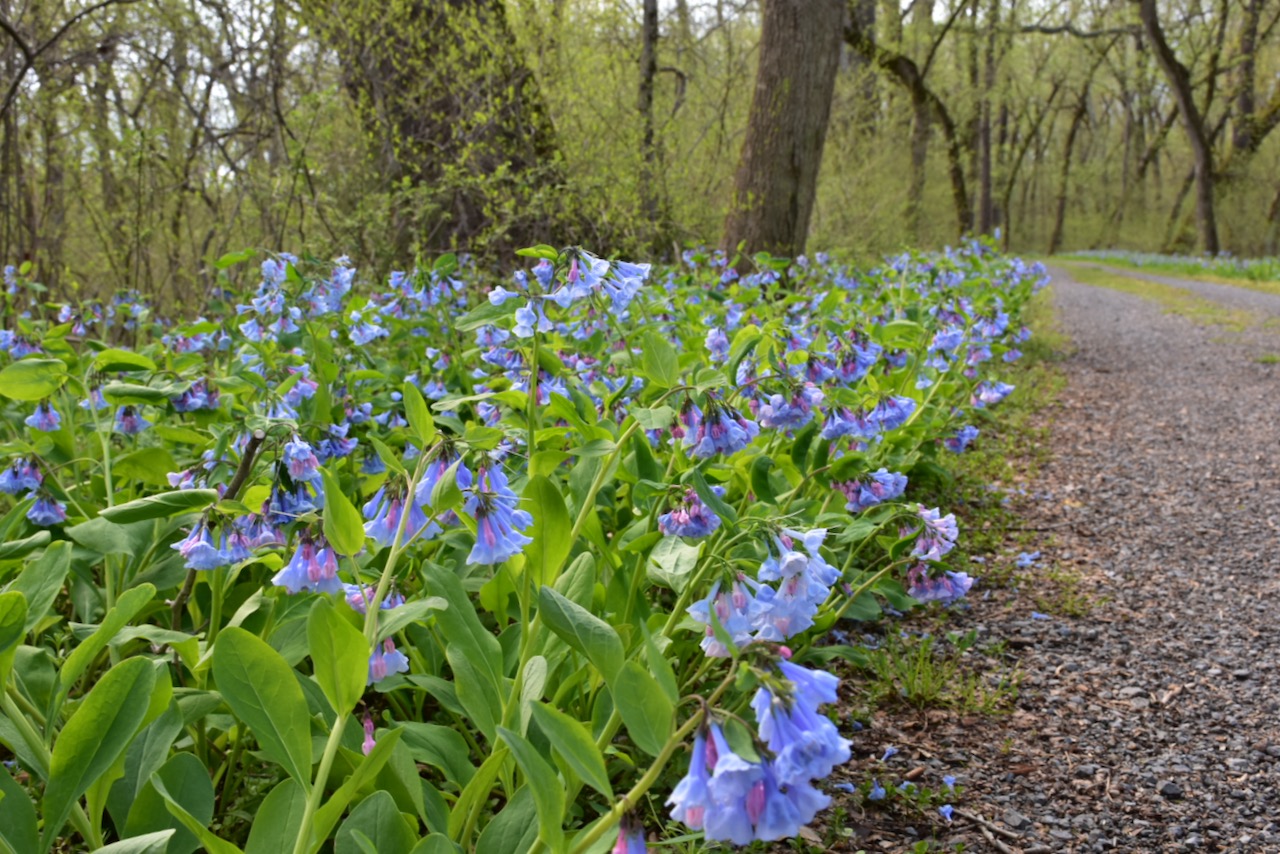
Bluebells along C&O Near Lock 51 by Cathy Hoyt
Spring is a beautiful time of year to explore the C&O Canal National Historical Park. As nature begins to awaken from its winter slumber, I find my eyes are no longer drawn upward to the tops of the majestic white sycamore trees along the river’s edge, but instead down to the wildflowers at the towpath’s edge. Wildflowers that appear early and have a short bloom time, often referred to as spring ephemerals, are like Mother Nature’s announcement that spring has arrived, and their cyclical appearance reminds me of the rhythms of the earth and the promise of warmer days ahead.
One of the first spring ephemerals I typically spot along the towpath is dutchman’s breeches (Dicentra cucullaria). The dainty white blossoms of these woodland perennials, which resemble a pair of pantaloons hanging upside down, are my signal to be on the lookout for other wildflowers. Squirrel corn (Dicentra canadensis), in the same family, seems to follow and bloom soon after. It is very similar to dutchman’s breeches, but has heart-shaped blossoms with a pink and sometimes lavender tint to them. The name comes from the resemblance of the plant’s root tubers to corn kernels and the fact that squirrels and other small animals are often responsible for digging up and spreading the roots.
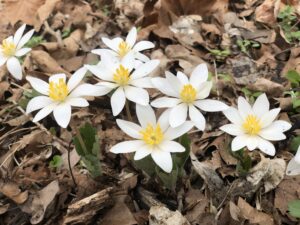
Bloodroot by Charissa Hipp
Bloodroot (Sanguinaria canadensis) and spring beauty (Claytonia virginica) also appear in the early days of spring along the towpath. Bloodroot flowers only last for a few days; on cold days, the petals stay closed like at night. When the petals are fully open, bloodroot flowers are quite lovely with their solitary flower and the contrast of the golden-orange center against the white petals. The unique lobed leaves of the bloodroot plant often catch my attention long after the blooms have gone away. The name is derived from the red juice in the underground part of the plant’s stem that was used by Native Americans as a dye for baskets, clothing, war paint, and insect repellant.
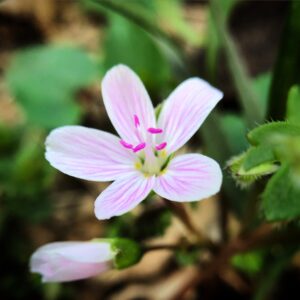
Spring Beauty by Charissa Hipp
Spring beauty (Claytonia virginica) is abundant in large patches along the towpath. The petals of this petite woodland perennial are white with very fine pink stripes that vary from light pink to bright pink. Sometimes they’re so faint that the flowers look almost entirely white; other times, the vibrant hot pink is impossible to miss. Spring beauty has blooms that last about a month.
It’s impossible to talk about spring ephemerals along the C&O Canal without mentioning bluebells (Mertensia virginica). Bluebell season is one of the most anticipated times of year in the Park, waiting for the beautiful blooms that range in color from white to pink to shades of periwinkle. I’m drawn to the bell-shaped, tubular flowers and love discovering bluebell alleys along the towpath when large swaths of them blossom on both sides of the towpath. Once I was standing in such a space, enjoying the beauty of the bluebells when a hummingbird made a brief appearance, attracted to the fragrance of the bluebells.
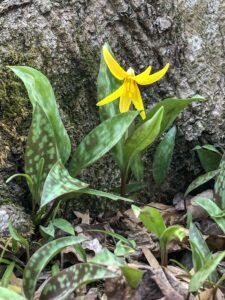
Trout Lily by Charissa Hipp
Yellow trout lily (Erythronium americanum) reminds me of origami with its unusual and intricate-shaped, nodding blooms. I think the blooms are prettiest when they’re just starting to open and I’ve learned to notice the spotted leaves of the plant long before the blooms even appear. It grows in large patches along the towpath and sometimes I’ll spot a few white trout lilies among the yellow ones. Trout lily tends to bloom a little later in spring and can last well into May.
These are just a few of the most common spring ephemerals that bloom throughout the C&O Canal National Historical Park. There are many more. Do you have a favorite? Is there a particular one that signals the arrival of spring to you?
Written by Charissa Hipp
Happy Earth Day! Find out how you can make a difference this Earth Day by implementing the five tips below!
1. Give Extra Love to Your House Plants
Don’t have plants? You can find seeds without leaving your home! Save those cores from consumed fruits and veggies and plant them in small containers. You will be amazed at how quickly the ends of lettuce or an apple or lemon seed will grow.
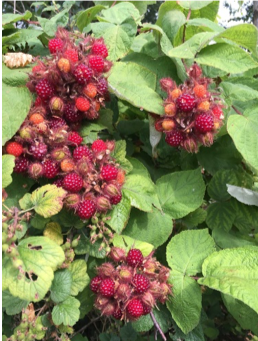
When the sun sets and the visitors have gone home, bats take to the skies over the C&O Canal National Historical Park. But these nocturnal and useful residents are facing a serious problem common to bats nationwide: White-Nose Syndrome (WNS).
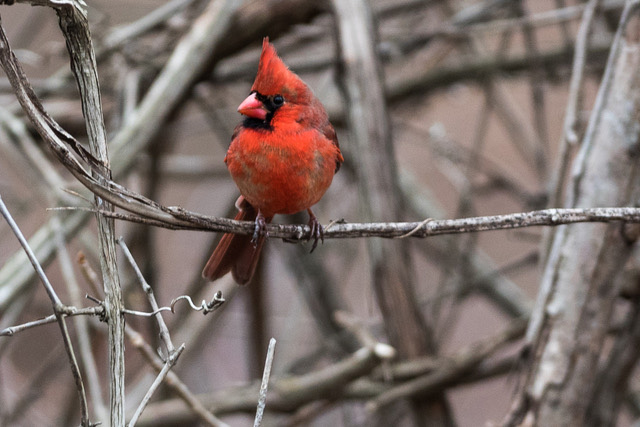
January 5 is National Bird Day, the perfect time to share with you the results of the 2018 C&O Canal Bird Count, which was conducted in January and February 2018 by 17 volunteers led by James Speicher. Read More
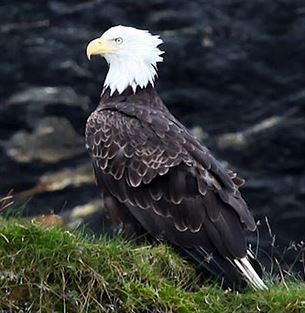
The Bald Eagle, considered a sign of strength since the times of the ancient Romans, has been our national symbol since 1782. Fun fact: Benjamin Franklin, in a letter to his daughter in 1784, described the bald eagle as “a bird of bad moral character”. This regal bird has now become an icon symbolizing American strength and fortitude. Read More
